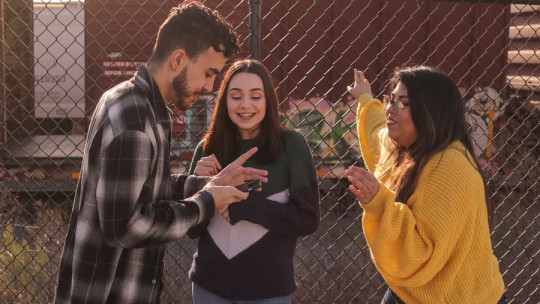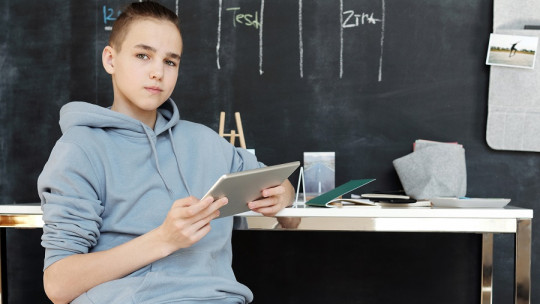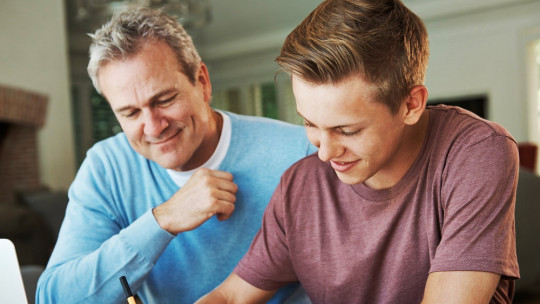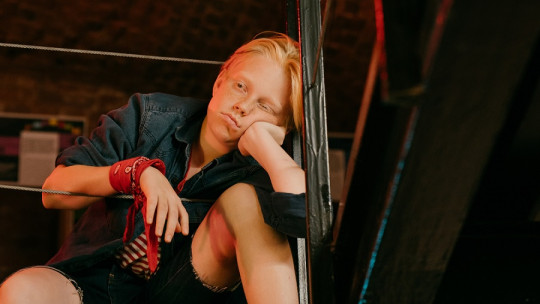
Once childhood is over, the younger the age, the more shy. Many adolescents have difficulties interacting with others, whether due to lack of assertiveness, self-esteem or confidence.
For this reason, introducing activities in the classroom or other group contexts that help to make contact with others and learn while doing them can prove to be a very useful tool for teachers and other related professionals.
In this article We will see a selection of group dynamics for young people and adolescents that are highly recommended, classified according to the situation and explained in depth. In addition, we will explain to you the benefits of applying this type of group activities, which can be used both at school and in camps, youth parties, entertainment venues with leisure and free time monitors, and more.
How to use and apply group dynamics?
Before going into detail and seeing some examples, it is necessary to emphasize that it must be taken into account that each group is a world That is why, before choosing a group dynamic, you must know what the people for whom the activity is intended are like and what the objective is to be achieved with it.
For example, the same dynamic may vary in effectiveness depending on whether it is proposed to be carried out at the beginning of the course, in the middle or at the end. It makes no sense to carry out a dynamic presentation of the members of a group when the course is about to end. It would also not make sense to test a dynamic to evaluate the trust of the group members if it is known in advance that there have been conflicts and there is tension.
Furthermore, it is important to apply group dynamics for young people from an inclusive approach. If one or more people who are supposed to participate find themselves unable to do so, a problem that did not exist before could arise, due to the feeling of exclusion that this produces.
Types of dynamics for young people (with examples)
Here we will see several group dynamics designed for the youngest, explained and with examples. In addition, there are some useful instructions for parents, school teachers and leisure and free time monitors.
1. Presentation dynamics
These dynamics are especially recommended for newly formed groups, as well as to prevent some young people from feeling marginalized or excluded by emerging groups who are beginning to become a group of adolescents. And many group dynamics are a useful tool against loneliness.
1.1. People to people
Two circles are formed with the same number of people. The inner circle faces outward and the outer circle faces inward.
It is very important that there are the same number of people in both circles, since pairs will be formed. People who are face to face must introduce themselves, according to what the activity facilitator has proposed.
When the facilitator says “people to people”, one of the two circles must move one place to the right. Thus, the couples are changed and presented again according to the pre-established rules.
The main objective of this dynamic, ideal for when you have started a school year or an extracurricular subject is that everyone knows each other, knows each other’s names and knows some of their colleagues’ hobbies.
One recommendation is that, in case the participants are odd, the facilitator of the dynamic himself joins as another participant.
1.2. We’re going to party
This dynamic, in addition to making it easier for members to get to know each other, allows them to test their memory.
A circle is formed and one of the members begins saying out loud his name and what he would take to an imaginary party Next, the colleague next to him introduces himself and says what he would take to the party, in addition to repeating the name and what the person before him has said.
1.3. Icebreaker
As its name indicates, this is one of the best dynamics for teenagers when the objective is to “break the ice” and get to know each other through an initial conversation
To put it into practice at a school activity, at a youth camp or at a popular festival, divide the teenagers into pairs and give them about five or ten minutes to talk to each other and get to know each other, indicating that each one should talk for the same amount of time. time. Next, ask each pair to share with the group an interesting or striking characteristic about their partner.
2. Dynamics to generate détente
These dynamics for young people are ideal for creating a relaxed atmosphere in which to strengthen ties
2.1. serious faces
Two lines are formed with the same number of members, who look at each other. Everyone puts on serious faces at first, but they are free to make any gesture or grimace or even tell a joke.
The objective of this dynamic is get a member of the opposite row to laugh generating an informal and fun situation.
2.2. Fears and hopes
Each participant must write on a piece of paper about their fears and hopes in relation to something they have experienced. The facilitator in the dynamic will invite the young people to say what they have written down on their papers.
What is expected is that at first almost no one wants to. This is why the dynamizer You should look at the member of the group who is the most assertive, and suggest that they be the first to speak Once you have done this, it is more likely that others will want to comment on what you have noted.
The facilitator in the dynamic will write down what the young people comment on a blackboard Once they have spoken, those emotions that have been the most commented on will be marked and they will be discussed.
23. Time Tunnel
This is one of those group dynamics for young people that works best if its participants already know each other even a little, since it lends itself a lot to sharing constructive comments and morally supportive observations about others. In addition, it is a bit similar to the previous one.
To put it into practice, ask teens to share an important and meaningful memory about their past and explain how it has affected the way they are today. That is, they must put into words a personal experience that helps understand their personality, their values or their interests and priorities. This will help build connections of empathy and understanding between group members.
3. Dynamics to work on communication and conflict
Various activities to work on communication skills and the management of more emotions from the point of view of others.
3.1. putting order
Two parallel lines will be marked on the ground and separated by a short distance, but enough for the participants to fit in a row. Group members will not be able to leave these two lines The facilitator of the task will say out loud a criterion with which the participants must put themselves in order, such as date of birth, height, color of clothing, forming a rainbow…
Once they have achieved it, they will discuss how they have done it. If they have talked to each other to find out or debate what the order should be, how have they managed to change places without getting out of line or bothering each other…
3.2. The submarine
Although it is a dynamic used more for children, the truth is that Teenagers and young adults may find it fun
The companions are placed in different parts of the room, standing and separated at least one meter from each other, and they will be the underwater mines. One person will go around the room blindfolded and will have to go from one end of the room to the other without crashing, acting as a submarine.
The idea is that if the submarine approaches an underwater mine, the mine should say “pee, pee, pee” to prevent it from colliding.
It is a pretty good dynamic in case there has been a conflict The reason for this is that, in case there has been a conflict between the members of the group, they will have to interact with each other anyway to avoid colliding and getting badly hurt.
3.3. Stimulating critical thinking
The facilitator asks questions related to ethical and moral aspects, such as: what would you do if you saw a wallet with €500? Which historical figure do you think would be best suited for our times? How would you act if you saw someone mistreating another person on the street?
The participants, who may be divided into groups or forming a large circle around the facilitator, They must reflect on an answer to the question posed
The objective is for the debate to flow, for the group members themselves to give their opinions and clarify them each time a new reflection arises, while managing their emotions in the face of opinions different from theirs. It is very important that the facilitator does not give his opinion or influence what the group thinks.
4. Dynamics of group reflection and collective creativity
These are exercises to find creative solutions to a problem.
4.1. Let’s describe a landscape
The participants will stand in a circle. One will begin by giving three basic characteristics of a landscape you are visualizing. The next one should do the same, but repeating what the first one said, and so on
This activity encourages creativity and can be used at any age, the only thing to take into account is the level of difficulty.
4.2. Artistic collaboration on paper
Offer artistic creation materials such as watercolors, pencils and/or markers and ask teenagers that they work by collaborating and coordinating with each other to create a work of art that represents some aspect of the group It is advisable that you opt for metaphors, you do not need to create a realistic representation of what the group you form looks like (in this way we will avoid trying to create very realistic portraits of each of the members, something key considering that Many adolescents have self-esteem problems with their own body).
4.3. Construction Challenge
Provides construction materials, such as toothpicks, building blocks or joints made with sheets of paper rolled and cut (with a strip of adhesive tape, they form small cylinders that can be glued together in different ways with a little glue ), and challenges teens to work in teams of two or three to build as tall and sturdy a structure as possible. To decide who wins, you can tilt each of the structures to see which one can hold the longest before collapsing.
5. Cooperation dynamics
These dynamics for young people are focused on promoting cooperation
5.1. Treasure hunt
The facilitator has hidden a treasure somewhere. Teams are formed and they must try to find out where the loot is located.
To make it more interesting, it is recommended to present this dynamic in the form of a gymkhana, putting notes or clues to activate curiosity and also provide data so that the groups reflect on where what they are looking for is.
The objective is that through teamwork they can find what the facilitator has hidden
5.2. Common things
Groups are formed with about 5 or 6 members each. These groups should make a list of about 10 things that their members share. To avoid going easy, mentioning body parts, clothing or work is strictly prohibited.
When everyone has their lists made, they must dictate them out loud to the facilitator, who will write them down on the board. This way, you will be able to see more clearly what things the entire group has in common, and from there you can approach future activities aimed at shared interests.
5.3. The rope circle
Form a circle with the teenagers and give each one a rope. Ask them to hold the rope with both hands and, coordinating with each other, form the outline of different figures together, such as an arrow, a star or a heart. Ideally, there is a person who, being in a close and elevated position, takes a photograph of the result seen from above. As a facilitator of this group dynamic for young people, you must promote coordination, communication and cooperation to achieve each figure.
Main benefits of group dynamics for adolescents
These are the advantages that group dynamics contribute to the psychosocial development of adolescents








